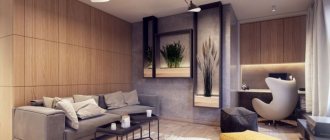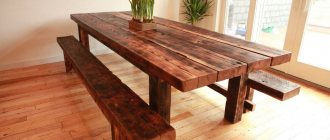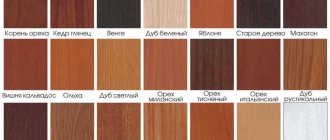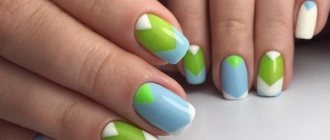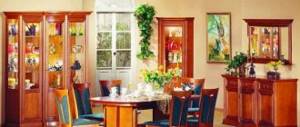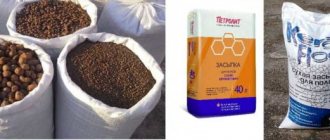What is it and what does it consist of?
MDF is a medium density fibreboard. The two most common forms of material are panels and sheets. Quality and service life do not depend on the shape.
It is made from small sawdust, just like chipboard. In the case of MDF, fine fraction sawdust is used, which allows you to create a more dense and reliable structure. According to GOST, slabs are smooth, even and uniform, so they are easy to work with - veneering, processing and milling.
MDF - medium density fiberboard
Manufacturing process
MDF is made from wood, crushed to the state of fine chips, almost to the state of fibers. Wood processing waste is used as raw material, so the production of this material can be considered environmentally friendly.
The ground wood is cleaned of sand and other foreign inclusions, washed and dried. The prepared mass is heated, a tape of the required width is formed from it, and then pressed. Under pressure, a natural binder, lignin, is released from heated wood fibers. It is he who is the binder in this material. The final shape of the products is given in a finishing press, which squeezes out the remaining air from the mass, forming a homogeneous MDF structure.
Before the press, a slab is formed from the mass
After pressing, the cooled material is submitted for grinding, where the flaws on the surface are removed from the MDF and the material is brought to the required thickness.
Not all types of wood provide a sufficient amount of binder. Then a similar, previously isolated lignin or other natural binder is added. Of all sheet wood materials, MDF is considered the safest, since the binder is natural, and formaldehyde emissions are comparable to those of wood (emission class F1, that is, it is allowed to be used for the manufacture of furniture for children's and medical institutions).
During production, fibreboards can be given special properties. Basically, moisture resistance additives increase moisture resistance and reduce flammability.
Appearance and release forms
In its “pure” form, the material has a grayish-brown color; when cut, it is a homogeneous dense mass. The exact shade depends on the type of wood ground and the amount of bark. In this form, the material is used as sheet construction - for the construction of light partitions and leveling walls.
The surface of MDF can be “refined”. It can be painted, laminated with PVC film, covered with veneer or plastic. This gives a fairly large number of design options, which is used in the furniture industry and in the production of finishing materials.
Not only can the mass be molded
The production technology allows us to create products of various shapes, thicknesses, and sizes. During finishing pressing, a certain relief can be formed, which is used in the production of furniture and doors. Finishing materials such as slabs and panels are also made from MDF. They make skirting boards, platbands, and other moldings from it. All these materials can be used for interior decoration.
The structure of MDF is fine-fiber; dust is generated during milling, which makes it possible to produce carved products. This is used in the manufacture of carved decorative elements - panels, screens for heating radiators, decorative grilles, figured furniture facades.
MDF or chipboard - which is better?
Having appeared on the market, MDF created competition for fiberboard. This was facilitated by its properties:
- with equal thickness, MDF is twice as strong as chipboard;
- the mass is very plastic and allows you to form reliefs of any complexity;
- easier to process; Even by appearance it is clear which is better - chipboard or MDF
- a homogeneous smooth surface allows you to obtain a good appearance, suitable for the furniture industry, even when painting and laminating PVC;
- has a lower formaldehyde emission factor;
- does not change shape when temperature changes.
All this led to the growing popularity of the material. Even though MDF is more expensive than chipboard. To some extent, MDF even competed with wood. For example, skirting boards, MDF trim, and finishing panels are increasingly used. This is due, firstly, to lower cost, and secondly, to greater practicality. Wood requires regular maintenance - painting, varnishing. MDF does not require special care. It is simply wiped with a damp cloth, using liquid detergent if necessary.
Advantages of MDF furniture
Environmental safety due to the use of harmless materials as binders. No unpleasant odors. Uniformity of structure, absence of inclusions that create an uneven surface. Possibility of use for the manufacture of wide shelves due to increased strength. Possibility of manufacturing bent facades, products with patterns made on CNC machines. When covered with natural veneer, it is difficult to distinguish an MDF board from solid wood in appearance. Resistance to microorganisms, fungi, and mold. Moisture resistance sufficient for the use of MDF furniture in the kitchen and bathrooms.
MDF boards
The manufacturing technology of MDF boards allows you to vary the density within a wide range: the minimum value is 760-780 kg/m3, the maximum is 1100 kg/m3 and even higher. Material with a lower density is used where the abrasion load is low: in the furniture industry, for finishing walls and ceilings.
Comparison of MDF with other materials
High density MDF boards are used for floor finishing. The material in this category has high abrasion resistance: one and a half times higher than that of oak (oak - 6.9, MDF - 10-11). If we add that the coefficient of warping along the diagonal is only 1.2 mm for every meter of diagonal (for plywood it is 15 mm), the love of furniture makers and finishers for this material becomes clear.
Dimensions and tolerances
One of the most popular forms of release is slabs of different thicknesses and formats. They can be found with the following parameters:
- thickness - from 3 mm to 40 mm;
- width 2800 mm;
- length - 1250 mm, 2170 mm. The length and width of the MDF board is standard, but the thickness may vary
It is convenient to work with MDF boards, since this material has very small tolerances for deviations from dimensions:
- the difference in thickness cannot exceed 0.2 mm (for plywood 0.5-2.5 mm);
- length may differ by no more than 5 mm;
- The width difference cannot be more than 2 mm.
When joining two sheets, the difference in thickness or size is very small or non-existent. Therefore, finishing MDF with sheets or panels is progressing quickly.
Types of surface finishing of sheet material
MDF boards are available with different types of surface treatment:
- Polished. Sanding can be on one or both sides. This material is good for painting and applying putty. If you use it to level walls, it is advisable to putty it under light wallpaper and then prime it. Thick wallpaper can be glued over the primer without puttying.
- Laminated (coated with PVC film). Lamination is usually done on one side, but can also be found with double-sided coating. Usually the film repeats the color and texture of various types of wood, but it can also be smooth - matte or glossy. This type of material is used for the production of furniture and finishing wall panels. The laminated subtype (also called LMDF) is used to make cabinet furniture for living rooms, kitchens and even bathrooms. Moreover, for kitchen facades they use the usual one, for countertops and bathroom furniture - moisture resistant with hydrophobic additives, which give increased resistance to water and steam. MDF can be covered with a layer of veneer or PVC film with the same wood structure
- Veneered. MDF boards are covered with the finest cuts of valuable wood - veneer. The appearance is very similar to solid wood. The disadvantage of this type of material is its high price. Of course, it is lower than similar solid wood products, but not as low as veneered chipboard.
- Covered with plastic. Another type of finishing, which is used mainly in the furniture industry.
If we talk about construction and repairs, they use polished MDF boards. When leveling walls or installing light partitions, when leveling floors and ceilings. Here is their approximate scope.
Frame mounting
If the surface of the walls or ceiling is uneven (deviations more than 1 cm), the method of installing sheet MDF is the same as for plasterboard - on a frame. The frame is usually assembled from wooden blocks, but no one forbids installing profiles under drywall. The cross-section of the bars is selected based on the unevenness of the wall - they must compensate for the entire height difference. Most likely, you will need 20*30 mm bars or something like that. They are stuffed horizontally in increments of 40 cm. With this step, the joints of the sheets (they exist if the ceiling height is higher than 280 cm) fall on the bar.
The sheathing is assembled from horizontal and vertical jumpers
Vertical jumpers are installed for the installation of sheet panels from the same timber. They are placed in increments:
- 54. 3 cm - for sheets with a width of 2170 mm;
- 42.3 cm or 63.5 cm for a width of 1270 mm.
The installation step of the vertical jumpers depends on the thickness of the selected material. For thin sheets (3-4 mm) it should be smaller, for thick sheets (5-6 mm) you can make more.
MDF sheets/plates are attached to the assembled frame. The peculiarity (compared to drywall) is that for hidden fastening you need to drill holes for the fasteners. Otherwise, the fasteners will not fit into a dense slab. To prevent the caps from sticking out above the surface, the hole under them is widened using a drill of a larger diameter.
Could be so
After installing the screws, holes remain on the surface. They are sealed with putty. If you plan to putty the walls further, proceed as when installing drywall - first fill the holes with putty, immediately removing the excess with a spatula. After drying, the putty areas are sanded with fine-grain sandpaper to finally get rid of possible unevenness. Then, having cleared the surface of dust, they begin to putty the walls.
Glue installation
If the walls are smooth, you can mount MDF boards without a frame - using glue. You can use liquid nails or a composition like SM-11. The operating procedure is as follows:
- The composition is applied to the surface of the sheet in a zigzag or islands.
- Place the sheet against the wall, press it, align it in a plane. Align by tapping on the protruding parts with your fist, while simultaneously checking the position using a level (you need to control the vertical and horizontal).
- Hold in the desired position for several minutes.
- Install the next sheet.
- After the glue has dried, seal the joints with putty. It is difficult to mount large sheets with glue
To ensure that the sheet does not move anywhere during installation, you can make holes in the corners and, after leveling, fix the sheet. Even if the self-tapping screw only sticks to the plaster, this will help, since it is required only at the initial stage - until the glue begins to harden.
This method seems simpler and costs less (due to the absence of a frame), but leveling bulky MDF boards is not at all easy. It's better to try on a small section of the wall. The thing is that it is impossible to disassemble what is installed. Only if you destroy the casing completely. So it’s worth thinking about which method is better.
Installation of sheet MDF on the floor
For laying on the floor, choose high-density moisture-resistant MDF boards (from 900 kg/m3 and above). Sheet thickness - from 5 mm when laid on a subfloor and from 10 mm when installed on joists. In this case, the installation method is similar to leveling the floor with plywood, only the gaps are smaller, since the wood board changes its parameters much less than plywood. Otherwise the rules are similar:
- First, the base is leveled to the horizon and cleaned.
- The slabs are laid with a gap of 2-4 mm from the walls.
- When laying, make sure that the seams do not match (staggered laying).
- The expansion joint between the plates is left 2-3 mm. The laying of sheet material on the floor does not change - staggered
- The fasteners are installed around the perimeter in increments of 10-15 cm, in the plane - in increments of 20-25 cm (or along the log).
- Holes are drilled for the fasteners, with an extension for the cap.
- After installing the fasteners, the holes and joints are sealed with putty.
After sanding the putty, the surface of the MDF floor is ready for painting. If you do everything carefully, you get a perfectly flat floor. This base can also be used as a base for flexible finishing materials or laminate.
For which rooms is MDF furniture suitable?
MDF is used in the production of furniture for premises for a wide variety of purposes:
- For kitchen. Kitchen facades are made from laminated or painted MDF boards. Facades can be straight or radial, smooth or milled.
- For a children's room. Due to the absence of harmful substances, MDF can be used for the manufacture of children's furniture: cabinets, changing tables, bedside tables and chests of drawers. Using milling, all sharp, dangerous edges are removed.
- For the bathroom. Laminated or painted MDF boards with edged ends withstand high humidity well.
- For the living room, hall, and office, slabs finished with valuable wood veneer are usually used.
MDF is a material used for both solid and framed facades. In the second option, the plate is combined with glass, natural or artificial leather, and metal.
MDF finishing panels
Finely dispersed pressed boards serve as the basis for the production of decorative finishing panels. The front surface is covered with paper. This is the cheapest option. Slightly more expensive ones are laminated with PVC film. There are also panels covered with veneer. This is a more expensive material. There are also options with plastic, but very rarely.
MDF panel with three-dimensional image - 3D
Decorative MDF panels are most often used to cover walls and sometimes ceilings. This finishing method saves time: the surface is leveled and immediately takes on its final form, since no additional finishing is required.
Types of decorative MDF panels
We will not talk about colors and shades, but about the shape of the inlet and the type of decorative surface. The shapes of finishing panels made of pressed wood fibers are:
- Rack type. The length is many times greater than the width. Length 2.0 m - 3.0 m, width from 150 mm to 250 mm. When choosing, pay attention to the thickness of the panel (from 3 mm to 9 mm) and the depth of the lock. Ideally, the lock (protrusion) should be at least 5 mm. In this case, joining the planks will be easy and problem-free. Mounted on a frame, secured into a tongue or groove using self-tapping screws. Linear type MDF panels
- Tiled type. Rectangular or square slabs. The maximum dimensions are meter by meter, but rectangles with different aspect ratios are more common. They are mounted on a frame or directly to the walls using a special system of hidden fasteners, the fragments of which “cling” to the protrusions of the slabs. Tiled type - in the form of rectangles of different sizes
- Sheet panels. They are rarely used for interior decoration, more often - for cutting in the manufacture of furniture. But, if necessary or desired, they can also be used as finishing, installing fasteners more often.
When choosing MDF panels, pay attention to the type of finish. The cheapest material is covered with paper, on top of which a thin layer of protective coating is applied. It is clear that such a surface gets scratched quickly; it can only be wiped with an exceptionally soft, slightly damp cloth. You cannot even use a rough sponge, otherwise light spots will form. Such MDF panels are good for finishing the ceiling - there is no mechanical load at all. If you install them on walls, it is better to immediately cover them with two layers of varnish. You choose the type of surface yourself - gloss, semi-gloss, matte, semi-matte... It is important that the film is durable.
These are several more types of 3D MDF wall panels
More expensive ones - with PVC and veneer - do not require additional finishing, but the price is 2-3 times more expensive. If your budget is limited, the option described above is not bad.
Caring for MDF furniture
When caring for MDF, it is recommended to use soft cleaning creams, gels, sprays, soap solutions and non-abrasive sponges. Also, do not use harsh chemicals such as chlorine or alcohol. Do not expose the material to prolonged heating above +70 o C. If possible, avoid prolonged contact of MDF with water. To prevent streaks, wipe surfaces with soft cloths.
To clean glossy coatings, special glass care products are used. To enhance their shine, special non-wax polishes and antistatic agents are used. Instead of hot water, it is better to use warm water.
Specifications
According to the characteristics declared by the manufacturers, laminated MDF does not differ significantly from solid pressed MDF. However, it has high density, strength and elasticity. Expensive types of MDF must be transported carefully and protected from wind and any precipitation.
This material should be stored indoors, at average temperatures and humidity levels up to 70%.
The thickness of MDF boards ranges from 16 to 22 mm. You can find single-sided and double-sided sheets. The most expensive material is white MDF 22 mm thick. Double-sided sheets are used in the production of walls and backs of various pieces of furniture.
During the manufacture of MDF sheets, carbite resins modified by melanin are used. That is why the level of formaldehyde emission in the resin is quite insignificant. Such indicators make it possible to equate MDF sheets to natural wood.
Thanks to their composition, MDF panels guarantee heat and sound insulation, because they are made from raw materials based on natural wood. This material does not have the negative qualities that are inherent in natural wood, for example, the surface of the MDF panel does not absorb liquid, and has a high level of resistance to mechanical damage and abrasion.
The palette of shades and textures of MDF panels is quite wide. Among the wide variety, you can choose the material for wall decoration in any room. After finishing, you will notice a decrease in thermal conductivity and an improvement in room acoustics. It turns out that MDF panels not only give a stylish look to the room, but also improve the quality of the room itself.
In addition, MDF panels are heat resistant. They are perfect for finishing an entire wall in the kitchen between wall and floor cabinets. Household chemicals are not harmful to this material.
The appearance of MDF panels is similar to natural wood, but there are no characteristic defects, for example, knots or cracks. Such panels can be made with a surface that is indistinguishable from marble and granite.
Definitions
MDF is a board produced by pressing wood chips at high pressure and temperature. To give the material strength, urea resins are added to the chips. The English abbreviation MDF means Medium Density Fibreboard, or in Russian – medium hardness fiberboard. The United States became a pioneer in its production, having mastered the industrial production of the new material back in 1966.
The difference between veneer and MDF is primarily that this product of the woodworking industry is a thin (0.1–10 mm) sheet of wood, which is made in two ways: the first is called planing, the second is peeling. The difference is as follows: sliced veneer is obtained by planing wooden blocks, and peeled veneer is obtained by removing a thin layer of wood from a log on a special machine. This machine is a specific unit, like a large lathe, where a thin sheet is removed from a log with a knife. In this case, the width of such a sheet is equal to the length of the log, and its length is determined by the thickness of the log and the thickness of the veneer. In practice, there are no particularly long pieces of peeled veneer; it is more economical to cut it into pieces of the required size and deliver it for further processing. Here it should be clarified: historically, the first method of producing veneer was sawing, but later more technologically advanced methods of its production were invented - first planing, and then peeling.
